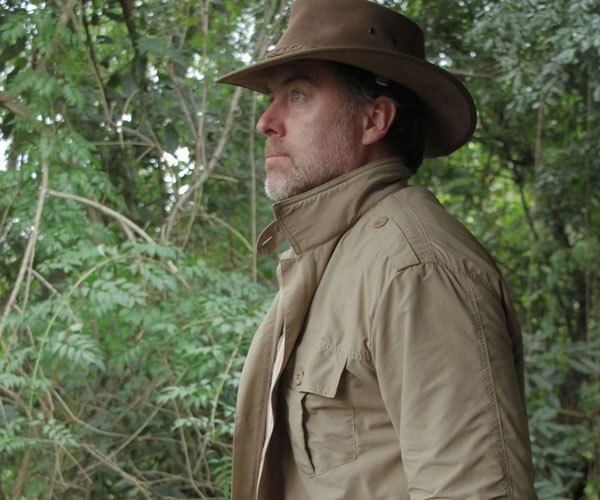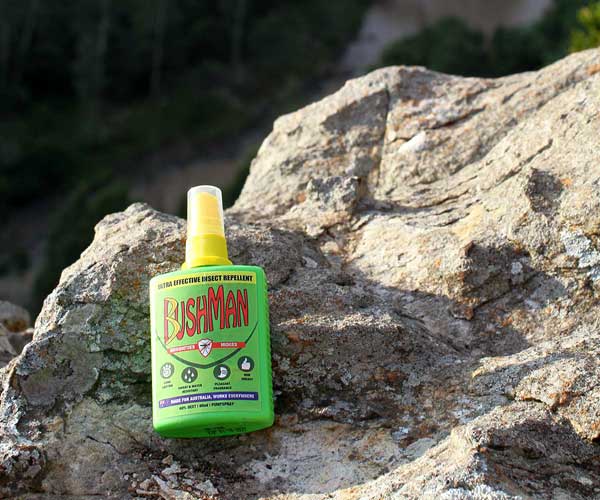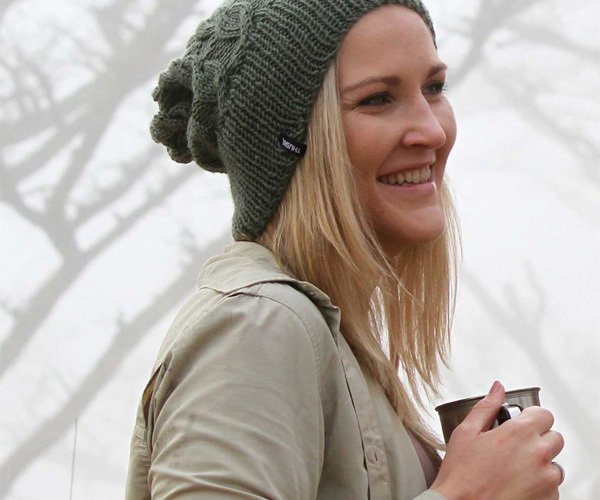The top 5 ways to dress for outdoor protection
As summer approaches and the weather heats up, it is natural to dream up blissful days outdoors. No doubt, many are seeking the special kind of solace that comes from time spent in nature as we navigate our new lockdown-defined lives. From simple walks in the countryside to multi-day excursions brimming with adventure, everything is better when you’re exploring.
Whether you are a seasoned frequenter of the outdoors or expanding the bounds of your adventurous spirit for the first time, the best experiences often pivot on the right gear. It is simply a matter of devising the perfect formula to suit your ambitions. Clothing now features practical technologies to keep you comfortable (and looking good). Most importantly, the right gear will afford protection against certain conditions to ensure everything from hikes and fishing trips to backyard gardening are worry-free in equal measure.
If dreaming up luxury safaris or exotic adventure travels is filling your hours at the moment, it’s a good idea to invest in apparel which is as suited to summertime as it is to the jungle or savannah. However you fill your suitcase or backpack, make sure you take along our top five outdoor clothing and gear recommendations for protection.
Outdoor clothing
The best outdoor clothing usually combines a few different features – and all of these will come in handy during summertime adventures. When it comes to protection, you will need anti-insect clothing to help keep the bugs at bay. The trick is to make sure that this doesn’t come at the expense of moisture wicking properties, which can be the case with some outdoor clothing brands. If you are active outdoors, you will appreciate wicking features when you are on the move and as the day heats up. Look for outdoor clothing that is lightweight and dries quickly (so your clothing doesn’t feel sodden in the event of walking through light rain, dew or after stream crossings).
 The ideal summer outdoor wear should also feature built-in sun protection features. UPF50+ is the protection rating you should have in mind. Just remember to opt for long sleeves and trousers for maximum coverage and protection for forearms and shins.
Safe, effective insect protection
Whether you are gardening in your yard or picking your way through the jungle, you want insect repellent that works when you need it to. Insects can be a nuisance – and you don’t want to spend valuable time on your walk or fishing trip listening to the soundtrack of midges and mosquitoes. More importantly, bites and stings can be very uncomfortable and some insects carry disease, which makes your choice of insect repellent that much more important.
The ideal summer outdoor wear should also feature built-in sun protection features. UPF50+ is the protection rating you should have in mind. Just remember to opt for long sleeves and trousers for maximum coverage and protection for forearms and shins.
Safe, effective insect protection
Whether you are gardening in your yard or picking your way through the jungle, you want insect repellent that works when you need it to. Insects can be a nuisance – and you don’t want to spend valuable time on your walk or fishing trip listening to the soundtrack of midges and mosquitoes. More importantly, bites and stings can be very uncomfortable and some insects carry disease, which makes your choice of insect repellent that much more important.
 We recommend Australian-made DEET-based repellents. Their efficacy for daily use and safety for the family make them a great choice. Read up on optimal DEET levels and keep an eye out for enhanced wearer characteristics to balance safety and effectiveness with comfort. To cover all bases, pair your insect repellent with high-performance anti-insect clothing. If a very resilient bug manages to penetrate these defences, it is a good idea to have some form of bite relief formula in your backpack to soothe bites and stings.
Wide-brimmed hats
Your skin needs protection from the sun’s harmful rays – even when it’s overcast. As mentioned above, clothing can offer built-in sun protection, but a hat is a staple when it comes to protecting your face and neck from painful sunburn. Opt for a wide-brimmed hat to shade the sensitive skin on the back of your neck and styles with a chin strap are great for keeping your hat around your neck if you don’t want it on top of your head throughout the day. A great hat is also an easy way to look stylish just about anywhere, so there’s no need to sacrifice fashion for function when it comes to this outdoor essential.
We recommend Australian-made DEET-based repellents. Their efficacy for daily use and safety for the family make them a great choice. Read up on optimal DEET levels and keep an eye out for enhanced wearer characteristics to balance safety and effectiveness with comfort. To cover all bases, pair your insect repellent with high-performance anti-insect clothing. If a very resilient bug manages to penetrate these defences, it is a good idea to have some form of bite relief formula in your backpack to soothe bites and stings.
Wide-brimmed hats
Your skin needs protection from the sun’s harmful rays – even when it’s overcast. As mentioned above, clothing can offer built-in sun protection, but a hat is a staple when it comes to protecting your face and neck from painful sunburn. Opt for a wide-brimmed hat to shade the sensitive skin on the back of your neck and styles with a chin strap are great for keeping your hat around your neck if you don’t want it on top of your head throughout the day. A great hat is also an easy way to look stylish just about anywhere, so there’s no need to sacrifice fashion for function when it comes to this outdoor essential.
 Don’t forget the sunscreen
Don’t rely on clothing alone to keep your skin protected from the sun. Apply effective sunscreen thoroughly and often to exposed skin to prevent sunburn, premature ageing, and negative effects of the sun. Everyone has their own preference, but we recommend high-end sunscreen sprays for their coverage and wearer characteristics.
Don’t forget the sunscreen
Don’t rely on clothing alone to keep your skin protected from the sun. Apply effective sunscreen thoroughly and often to exposed skin to prevent sunburn, premature ageing, and negative effects of the sun. Everyone has their own preference, but we recommend high-end sunscreen sprays for their coverage and wearer characteristics.
 Drinking water
In warmer weather and as you exert yourself, so it becomes even more important to stay hydrated. A bladder or hydration pack is a must for having a safe supply of drinking water on the trail. If you anticipate sourcing your own water while you are outdoors, a reliable purifying system or filter should be a priority. This is great to have around anytime you are worried about the quality of your drinking water.
Drinking water
In warmer weather and as you exert yourself, so it becomes even more important to stay hydrated. A bladder or hydration pack is a must for having a safe supply of drinking water on the trail. If you anticipate sourcing your own water while you are outdoors, a reliable purifying system or filter should be a priority. This is great to have around anytime you are worried about the quality of your drinking water.
 Steve Adams is Founder of The Safari Store. The Safari Store are providers of specialist safari and outdoor clothing, luggage and accessories that have been expedition tested to perform in even extreme African conditions.
If you would like to be a guest blogger on A Luxury Travel Blog in order to raise your profile, please contact us.
Steve Adams is Founder of The Safari Store. The Safari Store are providers of specialist safari and outdoor clothing, luggage and accessories that have been expedition tested to perform in even extreme African conditions.
If you would like to be a guest blogger on A Luxury Travel Blog in order to raise your profile, please contact us.
 The ideal summer outdoor wear should also feature built-in sun protection features. UPF50+ is the protection rating you should have in mind. Just remember to opt for long sleeves and trousers for maximum coverage and protection for forearms and shins.
Safe, effective insect protection
Whether you are gardening in your yard or picking your way through the jungle, you want insect repellent that works when you need it to. Insects can be a nuisance – and you don’t want to spend valuable time on your walk or fishing trip listening to the soundtrack of midges and mosquitoes. More importantly, bites and stings can be very uncomfortable and some insects carry disease, which makes your choice of insect repellent that much more important.
The ideal summer outdoor wear should also feature built-in sun protection features. UPF50+ is the protection rating you should have in mind. Just remember to opt for long sleeves and trousers for maximum coverage and protection for forearms and shins.
Safe, effective insect protection
Whether you are gardening in your yard or picking your way through the jungle, you want insect repellent that works when you need it to. Insects can be a nuisance – and you don’t want to spend valuable time on your walk or fishing trip listening to the soundtrack of midges and mosquitoes. More importantly, bites and stings can be very uncomfortable and some insects carry disease, which makes your choice of insect repellent that much more important.
 We recommend Australian-made DEET-based repellents. Their efficacy for daily use and safety for the family make them a great choice. Read up on optimal DEET levels and keep an eye out for enhanced wearer characteristics to balance safety and effectiveness with comfort. To cover all bases, pair your insect repellent with high-performance anti-insect clothing. If a very resilient bug manages to penetrate these defences, it is a good idea to have some form of bite relief formula in your backpack to soothe bites and stings.
Wide-brimmed hats
Your skin needs protection from the sun’s harmful rays – even when it’s overcast. As mentioned above, clothing can offer built-in sun protection, but a hat is a staple when it comes to protecting your face and neck from painful sunburn. Opt for a wide-brimmed hat to shade the sensitive skin on the back of your neck and styles with a chin strap are great for keeping your hat around your neck if you don’t want it on top of your head throughout the day. A great hat is also an easy way to look stylish just about anywhere, so there’s no need to sacrifice fashion for function when it comes to this outdoor essential.
We recommend Australian-made DEET-based repellents. Their efficacy for daily use and safety for the family make them a great choice. Read up on optimal DEET levels and keep an eye out for enhanced wearer characteristics to balance safety and effectiveness with comfort. To cover all bases, pair your insect repellent with high-performance anti-insect clothing. If a very resilient bug manages to penetrate these defences, it is a good idea to have some form of bite relief formula in your backpack to soothe bites and stings.
Wide-brimmed hats
Your skin needs protection from the sun’s harmful rays – even when it’s overcast. As mentioned above, clothing can offer built-in sun protection, but a hat is a staple when it comes to protecting your face and neck from painful sunburn. Opt for a wide-brimmed hat to shade the sensitive skin on the back of your neck and styles with a chin strap are great for keeping your hat around your neck if you don’t want it on top of your head throughout the day. A great hat is also an easy way to look stylish just about anywhere, so there’s no need to sacrifice fashion for function when it comes to this outdoor essential.
 Don’t forget the sunscreen
Don’t rely on clothing alone to keep your skin protected from the sun. Apply effective sunscreen thoroughly and often to exposed skin to prevent sunburn, premature ageing, and negative effects of the sun. Everyone has their own preference, but we recommend high-end sunscreen sprays for their coverage and wearer characteristics.
Don’t forget the sunscreen
Don’t rely on clothing alone to keep your skin protected from the sun. Apply effective sunscreen thoroughly and often to exposed skin to prevent sunburn, premature ageing, and negative effects of the sun. Everyone has their own preference, but we recommend high-end sunscreen sprays for their coverage and wearer characteristics.
 Drinking water
In warmer weather and as you exert yourself, so it becomes even more important to stay hydrated. A bladder or hydration pack is a must for having a safe supply of drinking water on the trail. If you anticipate sourcing your own water while you are outdoors, a reliable purifying system or filter should be a priority. This is great to have around anytime you are worried about the quality of your drinking water.
Drinking water
In warmer weather and as you exert yourself, so it becomes even more important to stay hydrated. A bladder or hydration pack is a must for having a safe supply of drinking water on the trail. If you anticipate sourcing your own water while you are outdoors, a reliable purifying system or filter should be a priority. This is great to have around anytime you are worried about the quality of your drinking water.
 Steve Adams is Founder of The Safari Store. The Safari Store are providers of specialist safari and outdoor clothing, luggage and accessories that have been expedition tested to perform in even extreme African conditions.
If you would like to be a guest blogger on A Luxury Travel Blog in order to raise your profile, please contact us.
Steve Adams is Founder of The Safari Store. The Safari Store are providers of specialist safari and outdoor clothing, luggage and accessories that have been expedition tested to perform in even extreme African conditions.
If you would like to be a guest blogger on A Luxury Travel Blog in order to raise your profile, please contact us.Did you enjoy this article?
Receive similar content direct to your inbox.


Some good recommendations here. Also, if spending time in the outdoors, I recommend some strong, sturdy boots that provide ankle support. So many times I’ve been out with groups and seen people twist ankles because they’ve just not had the right footwear for the conditions.
Absolutely, Max! Trail conditions definitely demand the right kind of footwear. Hope you have some exciting adventures planned this summer.
I’ve heard that outdoor khakis, such as those worn by travel adventure hosts or those that go on safaris, have SPF built in them. Until now, I wouldn’t have believed that and have always wondered how sun protection formulas can be woven in clothing. However, I’ve always believed in applying sunscreen even when there is no sun or even if I spend most of my time indoors. And mosquito repellants are in my essential travel kit when traveling to tropical destinations. it’s good to be reminded though of how these things are important as your toothbrush and toothpaste.
The last few weeks have seen some extreme weather conditions in Europe. We can’t give up on the great outdoors. You’re right. We’ve just got to be better prepared for whatever is thrown at us.
Although I’m based in the UK, I think that we don’t take insect protection seriously enough.
Both last summer and this summer I’ve had friends who’ve had to spend a night in hospital after they had been bitten by insects. One of them didn’t even know that he had been bitten. His foot swelled up and then the swelling reached half way up his calf. I think that I’ve learned lessons from what happened to them.